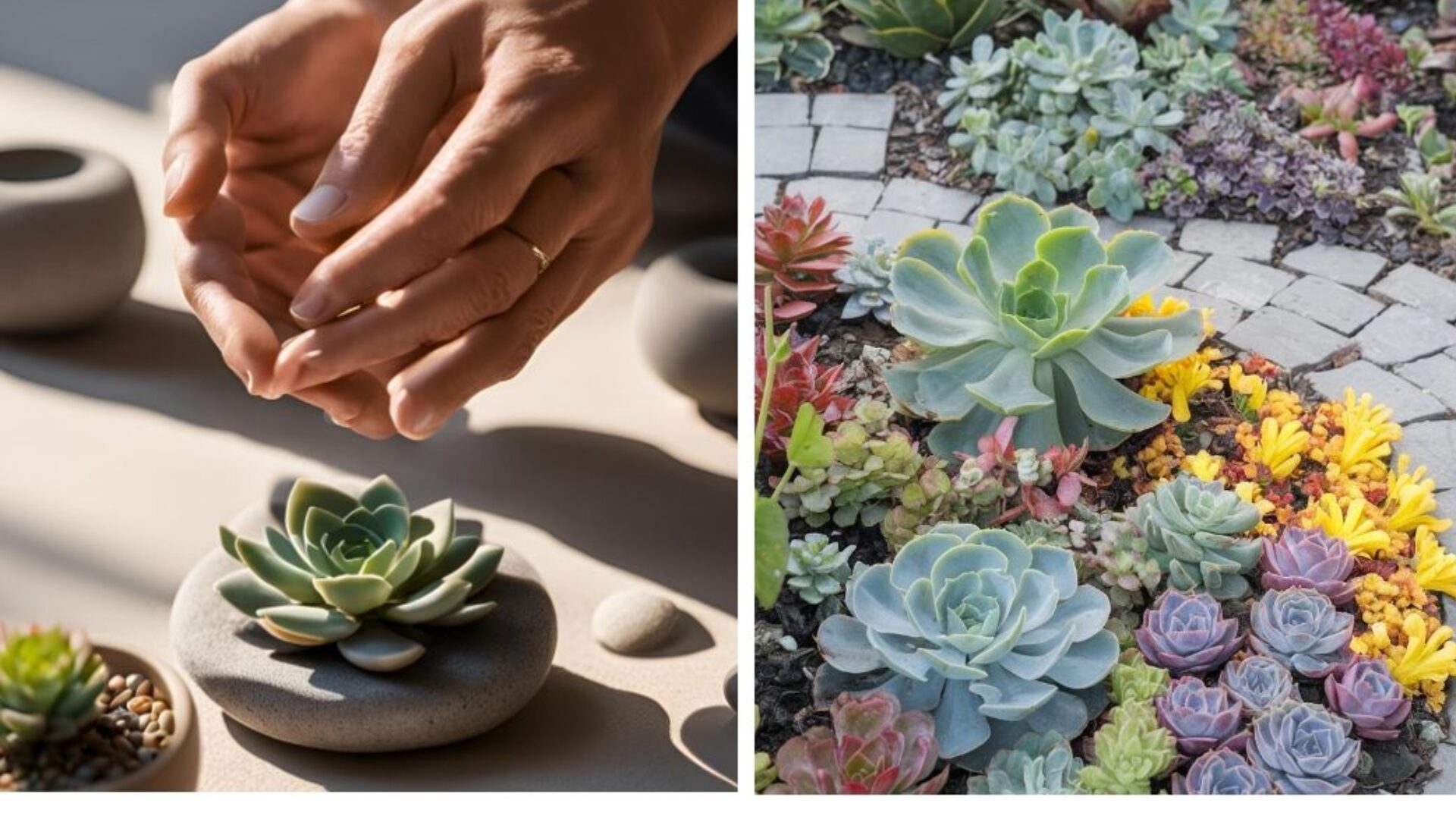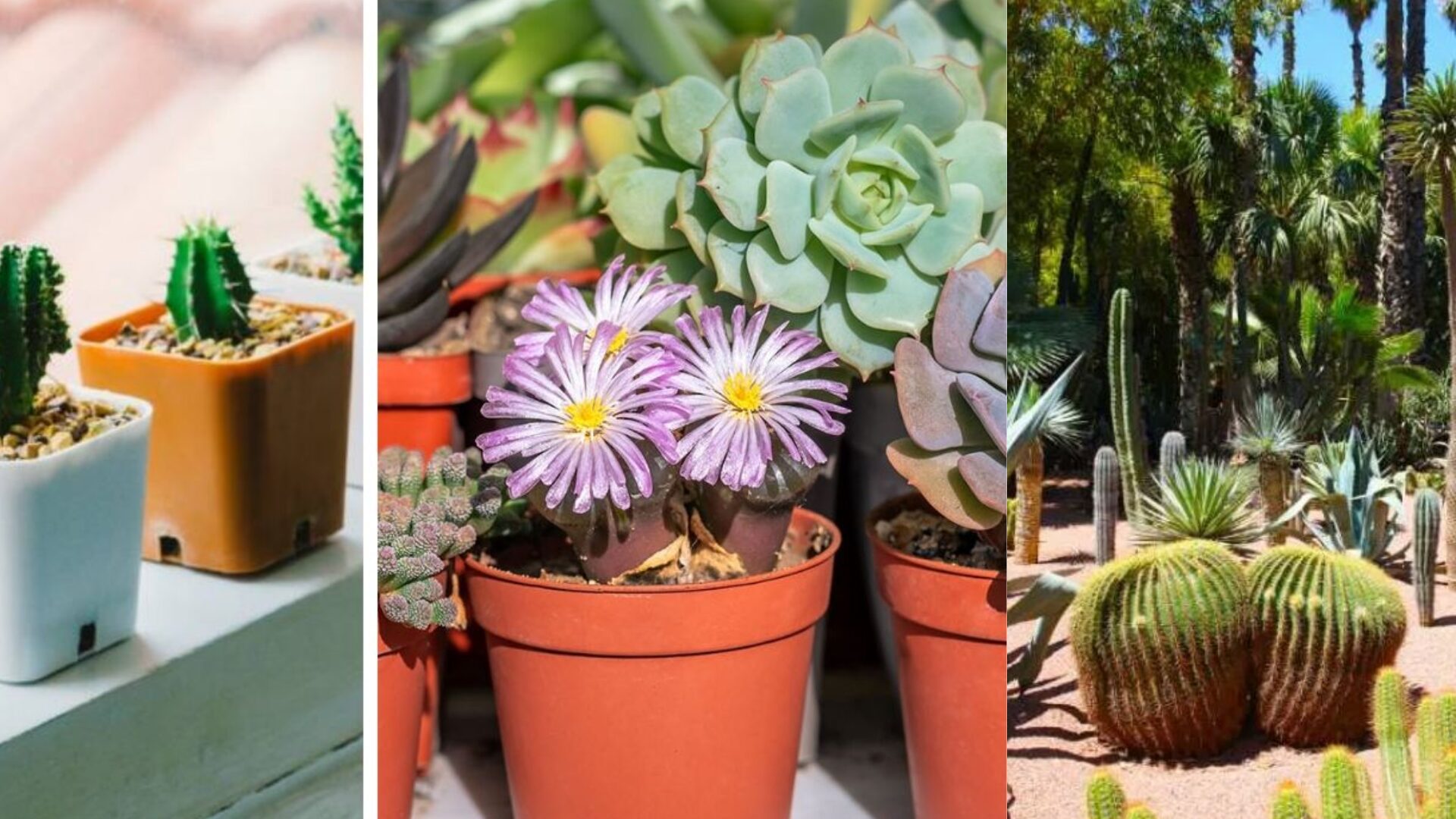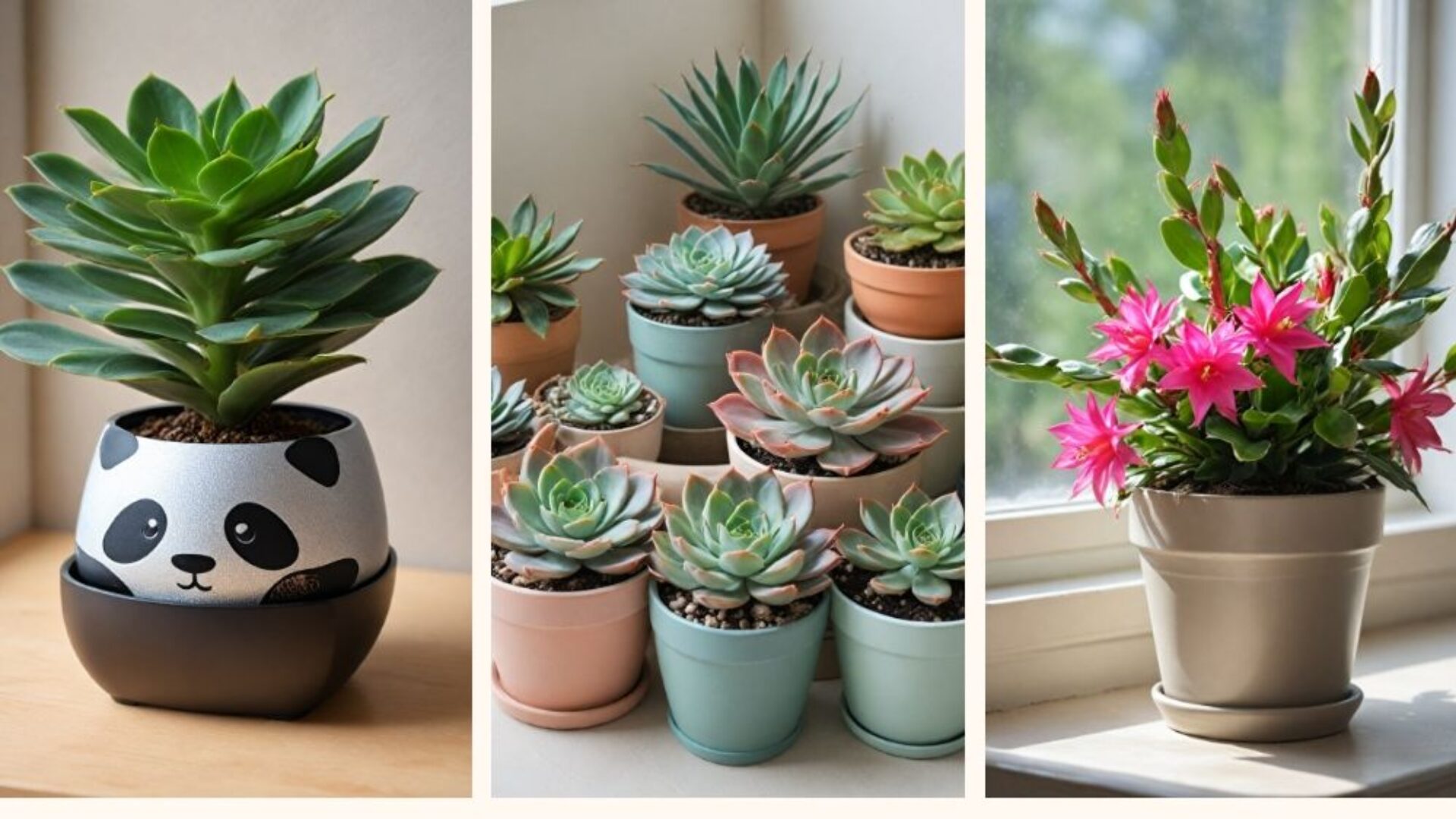Succulents have become one of the most beloved plant groups in modern gardening thanks to their drought tolerance, sculptural shapes, and ability to thrive even in small spaces. Whether you’re brand new to plants or browsing for your next addition at nurseries close to me, a garden center Vancouver BC, or one of the many garden centres in Vancouver, succulents are always an eye-catching and low-maintenance choice.
This comprehensive guide breaks down everything beginners need to know from choosing the right pot and soil to watering, lighting, fertilizing, grooming, and pest control. Each step is explained in detail so you can confidently grow happy, long-lasting succulents indoors or outdoors.

1. Choose the Right Container With Proper Drainage
Drainage is the number one rule for succulent success.
Why it matters
Succulent roots are adapted to arid climates. They rot quickly when sitting in waterlogged soil. A container with drainage holes allows excess water to escape and prevents root rot.
Expert tips
-
Avoid containers with no drainage unless you’re highly experienced.
-
If you absolutely must use a drainage-less pot for décor, keep your succulent in a plastic nursery pot inside the decorative container.
-
Many garden centres in Vancouver will help you choose breathable containers, such as terracotta or ceramic.
What to avoid
-
Deep pots that hold unnecessary moisture
-
Glass containers, unless you have very fast-draining substrate
-
“Zero-drainage” pots if you are a beginner

2. Use a Specialized Cactus & Succulent Soil Mix
Soil is the second most important factor.
Why you cannot use regular potting soil
Regular mix holds too much moisture and suffocates succulent roots. It also compacts over time, reducing aeration and increasing fungal risk.
What good succulent soil should have
-
Fast drainage
-
High aeration
-
Coarse particles
-
Low organic matter
Ingredients to look for
-
Pumice
-
Perlite
-
Coarse sand
-
Crushed lava rock
-
Pine bark fines
Most reputable soil mixes can be found at any plant shop Vancouver or garden center Vancouver BC, where staff may even recommend custom mixes for local climate.
3. Choose a Healthy Succulent From the Start
Before planting, make sure the plant is strong.
What to look for
-
Full, firm leaves
-
Vibrant color (not pale or yellowing)
-
Symmetrical shape
-
A dry, clean crown (center)
What to avoid
-
Mushiness
-
Black spots at the base
-
Stretching (etiolation)
-
Visible insects
Buy from trusted nurseries close to me or well-established garden centres in Vancouver to ensure quality and disease-free plants.

4. Proper Planting Technique for Beginners
The way you pot your succulent affects how it grows long-term.
Steps
-
Place 1–2 inches of succulent soil at the bottom.
-
Lift the plant gently from the nursery pot (squeeze the sides lightly).
-
Loosen the roots slightly (do not tear them).
-
Set the plant in the center.
-
Fill around with soil, tamping gently to avoid large air pockets.
-
Leave about 1 inch between the soil surface and pot rim for easier watering.
Pro tip
Use a soft brush to clean off soil from leaves after planting for a polished look.
5. Watering: The Soak-and-Dry Method Explained in Depth
Watering is where most beginners fail.
The correct approach
-
Water deeply until water escapes through the drainage hole.
-
Empty the saucer immediately.
-
Allow the soil to dry completely before watering again.
How often should you water?
It depends on:
-
Temperature
-
Humidity
-
Soil composition
-
Pot material
-
Light exposure
In Vancouver’s climate, indoor succulents typically require watering:
-
Every 1–1.5 weeks in summer
-
Every 2–3 weeks in winter
How to tell what your plant needs
It needs water if:
-
Leaves pucker
-
Soil is bone dry and pulling away from pot edges
It is overwatered if:
-
Leaves look swollen or translucent
-
Lower leaves fall off easily
-
Stem feels mushy
Most garden centers Vancouver BC will confirm that overwatering is the #1 killer of succulents.

6. Light: Balancing Sun, Shade, and Seasons
Succulents need strong light to stay compact and colorful.
Indoor lighting guide
-
Place near a south- or east-facing window.
-
Provide 4–6 hours of bright morning or filtered afternoon light.
-
Avoid direct midsummer sunlight indoors (can burn leaves).
Outdoor lighting guide
-
Morning sun + afternoon shade is ideal.
-
A sheer curtain can protect indoor succulents from scorching sun.
Winter lighting
Days are shorter and sunlight is weaker.
Consider using a grow light—especially in apartments or cloudy regions.
7. Fertilizing Succulents: How and When
Succulents don’t need much fertilizer, but they benefit from occasional feeding.
General guidelines
-
Fertilize once per month during spring and summer.
-
Use a succulent-specific fertilizer or a diluted all-purpose blend (¼ strength).
-
Do not fertilize in winter when plants are dormant.
Most options are available at any plant shop Vancouver specializing in indoor plants.

8. Dealing With Insects: Prevention and Treatment
Succulents aren’t pest magnets, but infestations can still happen.
Common pests
-
Mealybugs (white cotton clusters)
-
Aphids (tiny green insects)
-
Spider mites (fine webbing)
How to treat mealybugs
-
Dip a Q-tip in isopropyl alcohol
-
Dab directly onto bugs
-
Repeat until fully gone
What NOT to do
-
Do not use strong chemical insecticides
-
Do not drown the plant with water hoping the bugs will leave
If unsure, bring a leaf sample to your local garden center Vancouver BC for proper diagnosis.
9. Grooming and Maintenance
Regular grooming keeps plants healthy and visually appealing.
What to clean
-
Dry leaves at the base
-
Dead petals
-
Debris trapped between stems
Why grooming matters
Dead foliage attracts pests and holds moisture—two things succulents hate.
Avoid touching epicuticular wax
Many succulents (like Echeverias) have a powdery coating called farina.
Touching it leaves fingerprints that never fully disappear.
10. Temperature: Protecting Your Succulents From the Cold
Most succulents are not frost-tolerant.
Basic guideline
-
Bring plants indoors when temperatures drop below 5°C (41°F).
Outdoor succulents
Some cold-hardy varieties (Sempervivum, Sedum) can survive Vancouver winters, and are often recommended at garden centres in Vancouver for year-round outdoor planting.
Final Thoughts: Growing Confidence With Every Succulent
Don’t be discouraged if your first succulent fails, every plant parent has been there. Each attempt helps you learn more about soil, watering, and light balance. With the detailed tips above, plus the support of knowledgeable teams at nurseries close to me, garden centers Vancouver BC, and trusted plant shop Vancouver locations, you can build a thriving succulent collection in no time.
Succulents are forgiving, rewarding, and endlessly beautiful. Start with one, learn its rhythm, and watch your confidence and your garden grow.

Whether you’re shopping for plant lovers, hunting for meaningful plants, or simply looking to add a touch of green to your own holiday décor, DH Garden Centre has everything you need for a joyful, vibrant, and beautifully green Christmas.
Visit DH Garden Centre today: where the holidays grow brighter, one plant at a time.


